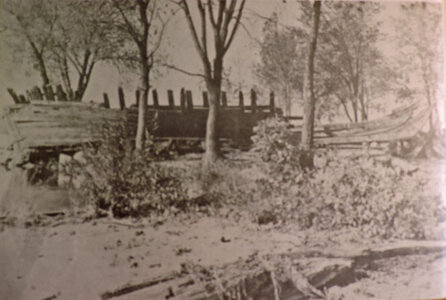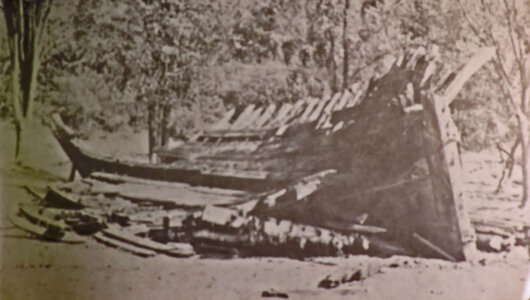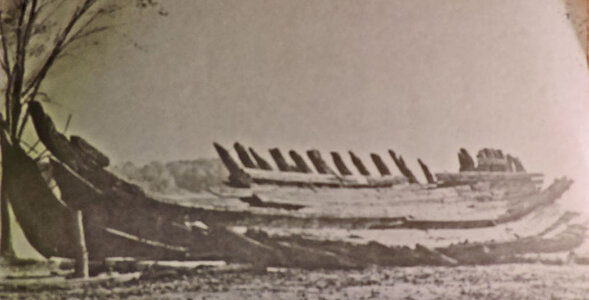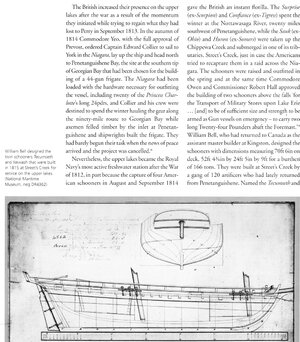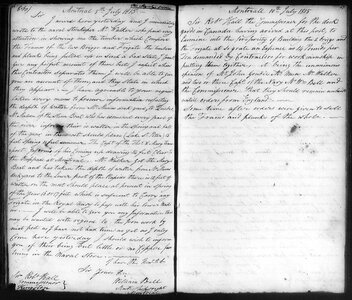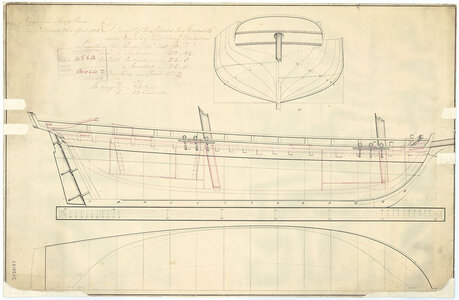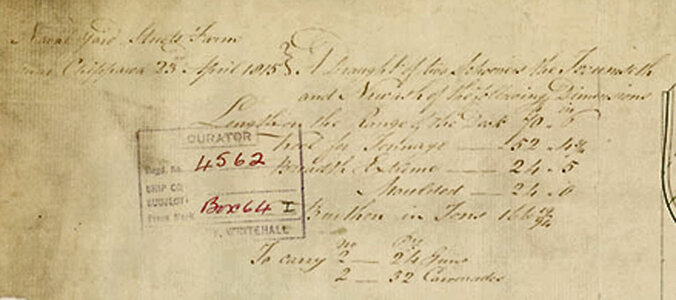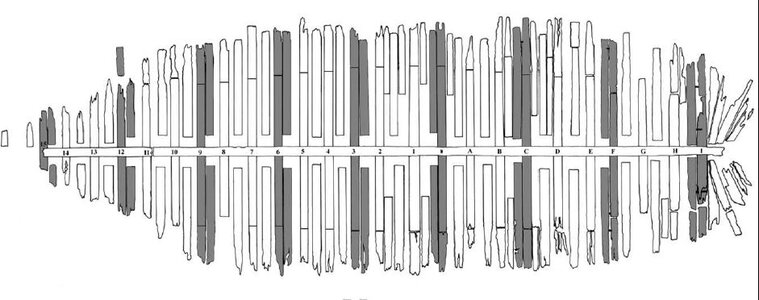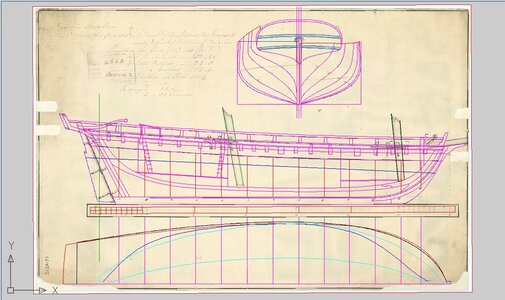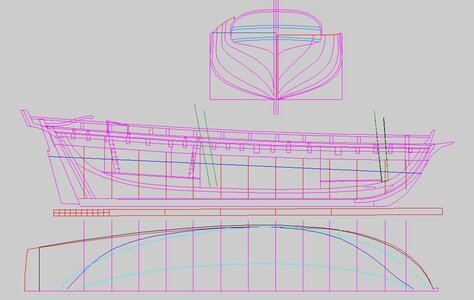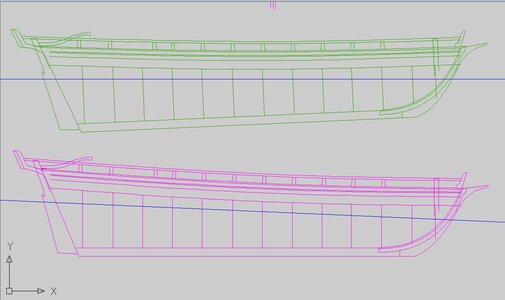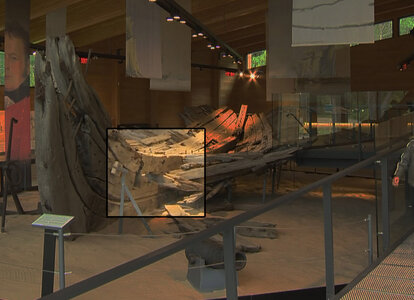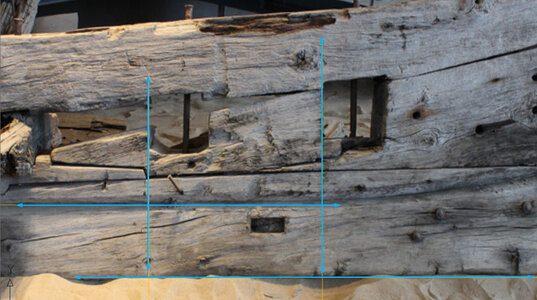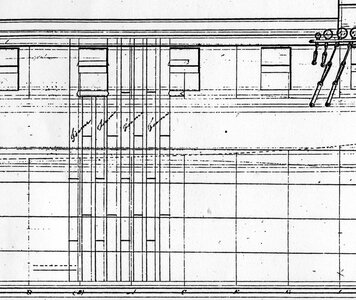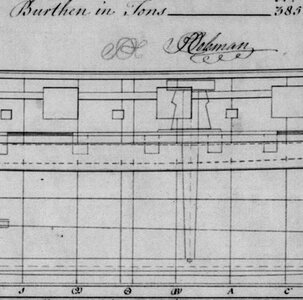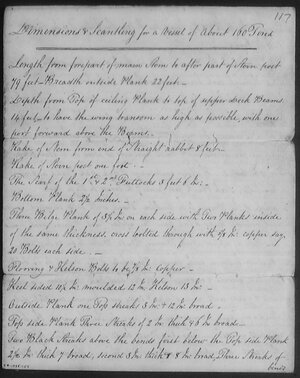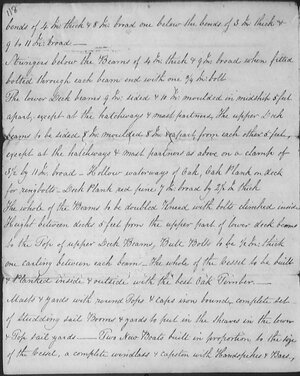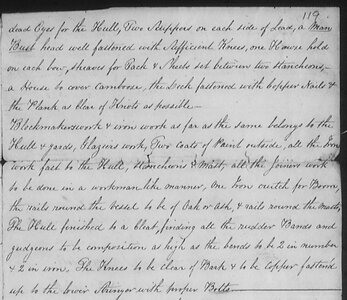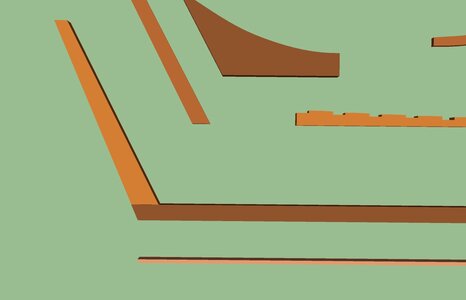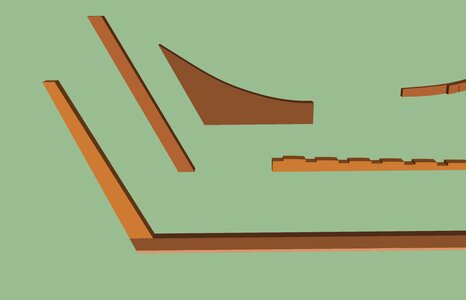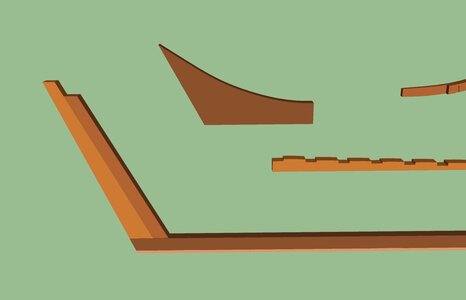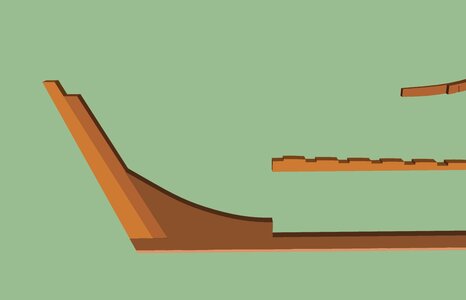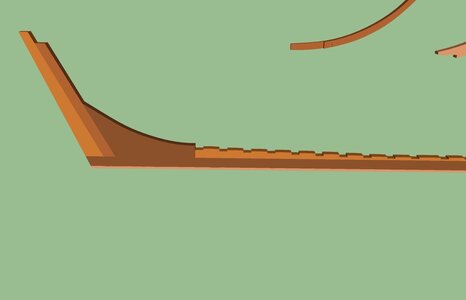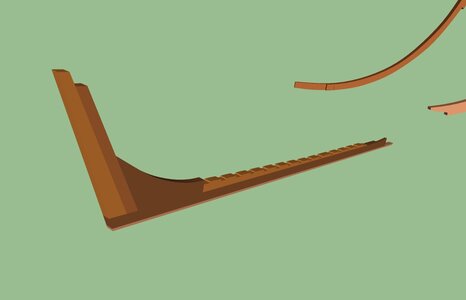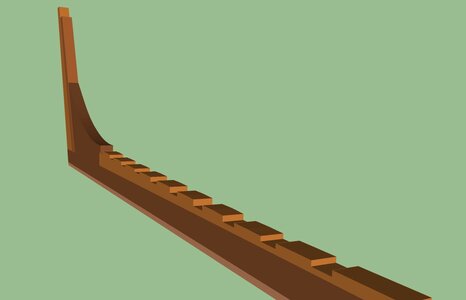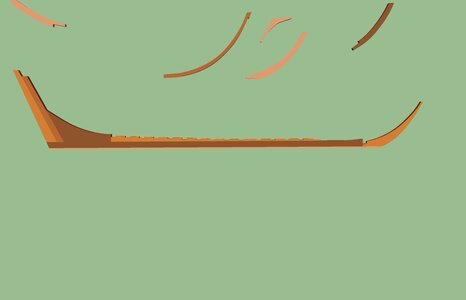bit by bit the story is weaved together
ARCHAEOLOGICAL AND HISTORICAL RESEARCH
The sunken relics of the War of 1812 were not lost to local memory; fascination with the
War of 1812 preserved oral histories of the conflict into the 20th century. Anniversaries
of particular battles and a rebirth of interest in the 1920s and 1930s led to the relocation
and recovery of some vessels.242 In 1927, the wreck of H.M. Schooner
Nancy was
recovered and put on display in Wasaga Beach, Ontario. Four vessels were rumored to
be located in Penetanguishene harbor; locals claimed that the hulls of
Confiance and
Surprize were sunk at the west side of the harbor while another two wrecks, thought to
be
Newash and
Tecumseth, could be found near Magazine Island.
in 1933 the town of Penetanguishene sponsored a recovery in which salvers “floated the
wreck which we had seen in Colborne Basin [part of Penetanguishene harbor] across the
harbor to the town dock and placed its picked bones in the town park.”243 Local
historians suspected that the wreck was the American-built schooner
Scorpion, a
participant in the Battle of Lake Erie that was captured by the British in 1814 and
renamed
Confiance. The wooden remains attracted visitors and vandals alike, and over
time, the hull was pillaged: “much of it…disappeared, being transformed into chairs,
desks, gavels, walking canes, candlesticks, picture frames and other ‘souvenirs of the
Scorpion’.”244 In fact, the wreck pillaged by souvenir hunters was too small to be
Scorpion. Historian C.H.J. Snider later identified it as
Scorpion’s smaller counterpart,
the American-built
Tigress,245 also captured by the British in 1814 and re-named
Surprize.
The 1953 Salvage of Tecumseth
The allure of the War of 1812 continued in the decades following the recoveries of
Nancy and
Tigress. In 1953, Professor Wilfrid W. Jury and students from the University
of Western Ontario began an archaeological project on the grounds of the former naval
establishment at Penetanguishene. Their survey was a success, mapping 30 buildings
and entertaining 17000 tourists.246
Jury and his students included the vessels from Penetanguishene harbor in their plans as
well. The scant remains of
Surprize, ex-
Tigress, were hauled onto the grounds of the old
establishment. That spring, it was announced that the hull of
Scorpion would be
recovered, and Jury made preparations for a salvage attempt. He secured the services of
a dredge and crew for one day in late August, and the town prepared for the reemergence
of the old schooner. An obvious hindrance to the efforts appeared almost
immediately: no one had told Jury exactly where the wreck was located. Many of the
individuals who had been involved in the recovery of
Tigress twenty years earlier had
passed away since those efforts. Nevertheless, Jury proceeded, determined to raise one
of the two wrecks near Magazine Island. At 7:30 a.m. on 29 August 1953, the last day
the dredge was available, “Operation
Scorpion”247 began:
Surrounded by an armada of small craft armed with cameras, flashlights,
microphones and equipment for speech-making and broadcasting, the dredge
plunged its steel-toothed clamshell bucket into a buoyed area a hundred yards
[91.46 m] from the bank, where the water was 15 feet [4.57 m] deep. A pause
while the steel teeth crunched like fangs on a bone, and up rose the bucket,
spewing jets of water, with a tapered black timber in its jaws. Motor horns
among the growing gallery of automobiles and spectators lining the foreshore
‘sounded a peal of warlike glee’ as the derrick arm swung and the opening
bucket dropped the timber on the dredge’s deck. Next was brought up a shorter
mass of blackened oak, with a stout chain attached. This the ‘experts,’ pale
augurs muttering low, pronounced a shank-painter, and none gainsaid their word
– not even when murmuring, ‘
Newash or
Tecumseth,’ they diagnosed the next lot
of oak and ironwork as the port forechains, waterways and channel. The pile of
dripping wood and rusted iron grew on the dredge deck until both bows of the
wreck had been demolished piecemeal, and the water was opaque with disturbed
silt. Still the ship had not been budged.248
Jury and his crew worked late into the evening, until the remains were wrenched from
their grave and hauled onshore (fig. 14). Several timbers had been dislodged from their
original places on the hull. Twelve round shot were found, cleaned, and emblazoned
with the name “
Scorpion.”249 The wreck was examined by a number of experts250 who
all reached the same conclusion. The wreck was certainly not
Scorpion; it was too large.
Dimensions of the hull corresponded nearly exactly with a draft of two schooners
constructed in 1815:
Tecumseth and
Newash.
The wreck was specifically identified as H.M. Schooner
Tecumseth, by evidence of the
rig. Three chainplates were recovered, indicating that the mast had three shrouds,
precisely as shown in the drawing. In addition, though the foremast step had
disappeared, bolts remained as testament to its location, which was far forward in the
bow.251 As
Newash had been re-rigged as a brigantine and her foremast moved, the
foremast step would not have been in the same location as that in the draft.
Thus identified, the skeletal vessel was labeled and displayed. Archaeological work and
reconstruction continued at the former naval depot at Penetanguishene, and a museum
called Discovery Harbor (Havre de la Découverte) was established on the grounds. The
museum is home to two replica schooners,
Tecumseth and
Bee, which were
reconstructed on the basis of archaeological and historical evidence and sail the waters
of Penetanguishene Bay and beyond.
Early Publications
A photographer from
Life magazine recorded the salvage in Penetanguishene, and an
article appeared in the publication shortly afterwards. Soon afterwards, experts on Great
Lakes vessels and other relevant topics, including historians C.H.J. Snider, Rowley
Murphy and John R. Stevens, visited the hull, helped identify the wreck and published
scholarly works on the vessel. Snider featured the vessel in his “Schooner Days”
column, published in the
Toronto Evening Telegram.252 Murphy published
“Resurrection at Penetanguishene” in
Inland Seas in 1954. He described the salvage and
illustrated the evidence that allowed the remains to be identified as
Tecumseth. Stevens
prepared “The History of H.M. Armed Schooner
Tecumseth.” In 1961, Stevens’ work
was printed along with Rear Admiral H.F. Pullen’s “The March of the Seamen.”
Together, Stevens’ and Pullen’s work presents a detailed view of the vessels. Pullen
concentrated his historical investigations on a naval uniform button found “between the
planking and the ceiling” of the ship.253 Based on the particular design on the face of
this button, Pullen traced it to the seamen who had traveled overland from New
Brunswick to Kingston in 1814, possibly even Lieutenant Henry Kent himself. Stevens
discussed the naval architecture of the schooner in his publication and drafted a number
of views of the hull, including a body plan, midship section, inboard profile, planking
expansion, a redrafting of Moore’s original construction design and a rigging plan.254
1970s Examination and Conservation Efforts
With the hull removed from Penetanguishene harbor, the archaeological remains of
Tecumseth were available for study. The shelter of Discovery Harbour (Havre de la
Découverte) protected the hull from the vandalism that had nearly destroyed
Tigress, but
the remains were still subjected to the elements. In October 1976 Charles Hett, a
conservator, visited the wrecks in Penetanguishene. Hett examined the wooden remains
for signs of deterioration and sent five samples from
Tecumseth’s hull to the Canadian
Conservation Institute for analysis. As one might expect, Hett’s report on the condition
of the hulls was not particularly uplifting.
Both wrecks show the deterioration which is to be expected when wood from
underwater burial is raised and allowed to dry without treatment. The
deterioration is caused by the collapse of weakened cell walls when the water
evaporates, and manifests itself in surface checking, warping, splitting;
dimensional changes which will vary according to the cut of the wood as well as
the type of wood. The damage describe above, and noticeable in varying degrees
in the two shipwrecks can be considered irreversible.
In addition to the damages noted above there is continuing deterioration due
largely to exposure to the elements. Both wrecks appear to be suffering from
extensive deterioration due to micro organisms [sic]. Areas which retain
moisture are most severely affected by this attack, notable the ribs. Considerable
detritus has accumulated in the areas between the ribs and the planking, this
detritus will retain moisture and will provide a continuing source of nutrition for
micro organisms [sic].255
In addition to damage from microorganisms, Hett noticed that mechanical erosion had
occurred while the hull was underwater, leaving the exterior surfaces weakened and the
planking thin.256 The already-fragile hull was subject to additional damage from
environmental effects, and Hett recommended that some type of structure be built over
both hulls, to protect them from further damage.
Hett found traces of preliminary conservation efforts:
Application of a commercial synthetic resin…[has] been made to the
wood and metal parts…This material is visible as a glossy varnish in the
iron, but is not visible on the surface of the wood. It is impossible to see
whether this has achieved any useful purpose, unknown materials should
not be employed for consolidation; in general they cause more problems
than they solve.257
As a result of Hett’s recommendations, both hulls were moved to a permanent display
area on the grounds of the museum. The remains of
Tecumseth, being more substantial
and in better condition than that of
Tigress, are more prominently displayed.
1997 – 1998 Archaeology
Although Jury’s efforts in 1953 have made the remains of H.M. Schooner
Tecumseth
readily accessible for study by nautical archaeologists and the non-diving public alike,
modern archaeological techniques are far superior to those used in the salvage. The hull
certainly suffered tremendously in the dredge’s jaws and evidence of the vessel’s design
and construction was obliterated. As nautical archaeologists can attest, much more
information can be gathered about a shipwreck from studying it in situ, or by careful
excavation and recording, than by simply removing the wreckage off the bottom. The
timbers have also suffered from a minimal amount of preservation treatment and
continual exposure to environmental effects.
While studies undertaken shortly after Jury’s salvage analyzed the remains and
documented the overall history of the vessel,
Tecumseth was not subject to modern
archaeological study. As part of a comprehensive Texas A&M University program to
investigate War of 1812-era shipwrecks in the Great Lakes,
Tecumseth was visited by a
team of student archaeologists, led by graduate student Erich Heinold, over two weeks in
June 1997. The following summer
Newash was surveyed in situ at the bottom of
Penetanguishene harbor. Dimensions were taken of all accessible timbers, using
measuring tapes and goniometers. Significant details of the hulls were drawn, to gain a
better understanding of the precise methods used in constructing the two ships and wreck
plans were made of the existing timbers of both hulls.
In addition to the archaeological study, Heinold searched for documentary evidence of
the two vessels. Because the ships had served in the Royal Navy, many Admiralty
records survive of their sailing careers and the events of the time; a number are currently
held in the Library and Archives of Canada in Ottawa.
Although Heinold compiled a large amount of archival and field documentation and
made detailed wreck plans (figs. 15 and 16), no final project or publication was
created.
Many of the field notes and copies of Admiralty documents made during the
archaeological investigations are held in the collections of Dr. Kevin Crisman, professor
of Nautical Archaeology at Texas A&M University.
2007 – 2008 Investigations
Because a final publication had yet to be created, additional research was conducted in
preparation for the current project during the summers of 2007 and 2008. The author
made two trips to Penetanguishene, documenting specific details of
Tecumseth each
time. Historical records in the Bayfield Room at the Penetanguishene Public Library
were consulted, and microfilm and transcribed documents at the Library and Archives of
Canada were analyzed for pertinent information.
While preparing this hull and rigging analysis, the author had the opportunity to discuss
matters of history, shipbuilding and seamanship with captains of modern reinterpretations
of contemporary vessels including the U.S. Brig
Niagara and the topsail
schooner
Pride of Baltimore II. Both vessels are reconstructions of War of 1812-era
ships, and the captains contributed insights into potential sailing characteristics of
contemporary sailing vessels.
